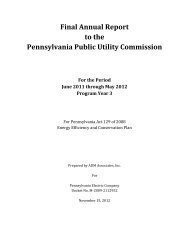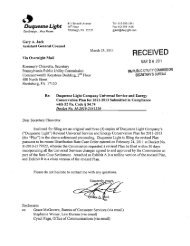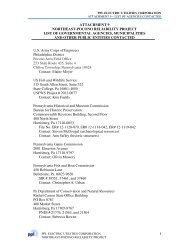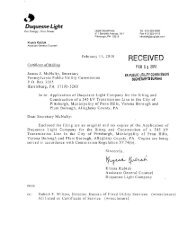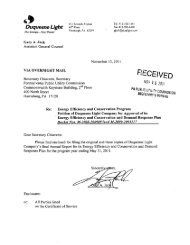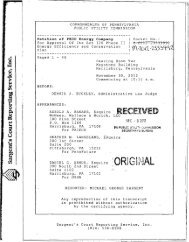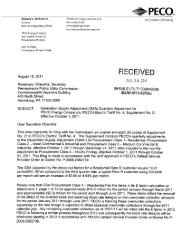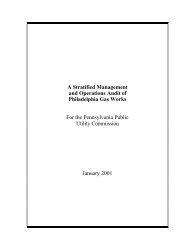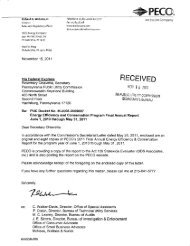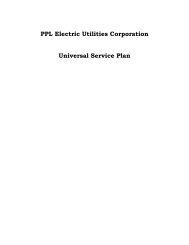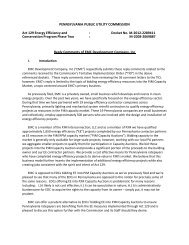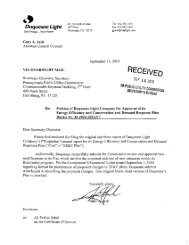2009 Report - Pennsylvania Public Utility Commission
2009 Report - Pennsylvania Public Utility Commission
2009 Report - Pennsylvania Public Utility Commission
You also want an ePaper? Increase the reach of your titles
YUMPU automatically turns print PDFs into web optimized ePapers that Google loves.
processes to expedite the licensing of cost effective transmission<br />
resources needed to maintain reliability.<br />
2. Regulators and policy makers must support the development of costeffective<br />
transmission resources, including equitable cost allocation<br />
guidelines for the delivery of both remotely located wind resources and<br />
ancillary services (such as spinning reserve and frequency response) to<br />
demand centers where such resources and/or services are deemed<br />
necessary and beneficial. Coordinated effort is needed to better determine<br />
appropriate calculations for measuring the availability of wind on peak.<br />
3. Additional demand-side resources could be an effective option to preserve<br />
system reliability over the next 10 years. In addition, they may facilitate the<br />
integration of renewable and variable resources. Potential reliability<br />
impacts of broad-scale use of demand response resources must be better<br />
understood by industry and regulators. Better measurement and<br />
verification techniques will be needed to measure and track actual<br />
availability of demand response under various system conditions.<br />
NERC has also identified seven emerging issues affecting risk<br />
assessment: a) greenhouse gas reductions; b) fuel storage and transportation; c)<br />
rising global demand for energy and equipment; d) increased adoption of<br />
demand-side and distributed generation resources; e) replacing, upgrading and<br />
adding transmission infrastructure for the 21st century, including enhanced cyber<br />
security protections; f) water availability and use; and g) mercury emissions<br />
regulations.<br />
Peak demand in the United States is expected to increase by 127,614 MW<br />
or an average of 1.7 percent per year for the next 10 years, while net capacity<br />
resources are projected to increase by 47,610 MW or 5.2 percent (0.5 percent<br />
annually). Capacity margins are expected to decline from 16.5 percent in the<br />
summer of 2008 to 7.4 percent in 2017.<br />
The NERC Reference Margin Level capacity margin level of 13 percent is<br />
used to identify approximately when additional resources may be needed. The<br />
existing capacity sufficiently meets the NERC Target Margin Level through 2015;<br />
however, this includes the combination of a predominately summer peaking<br />
system (NERC-US) and one that, with the exclusion of Ontario, is a winter<br />
peaking system (NERC-Canada).<br />
Electric Power Outlook for <strong>Pennsylvania</strong> 2008-2013 61




